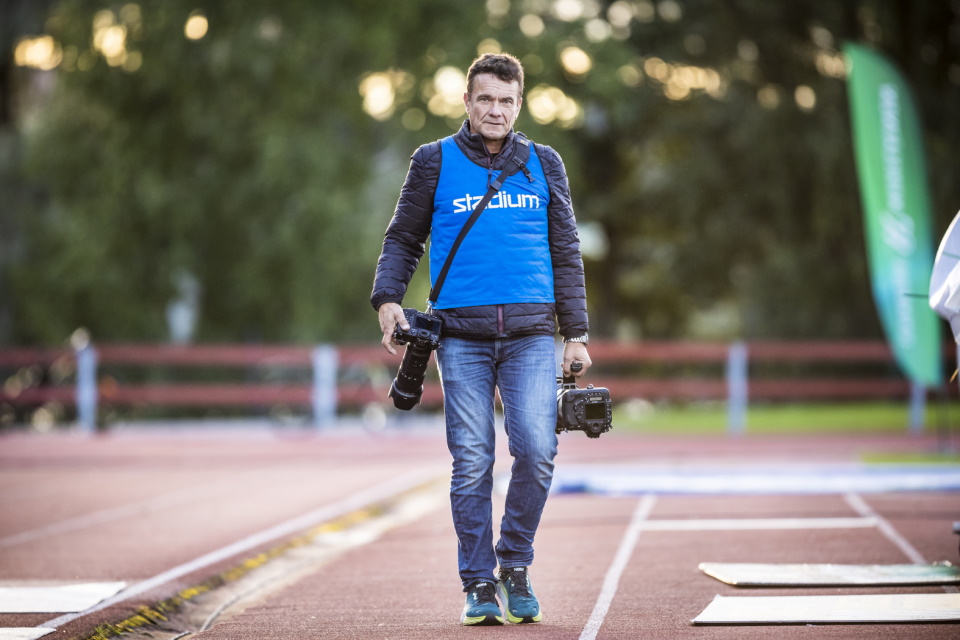Finland’s Jari Turunen a special kind of photographer
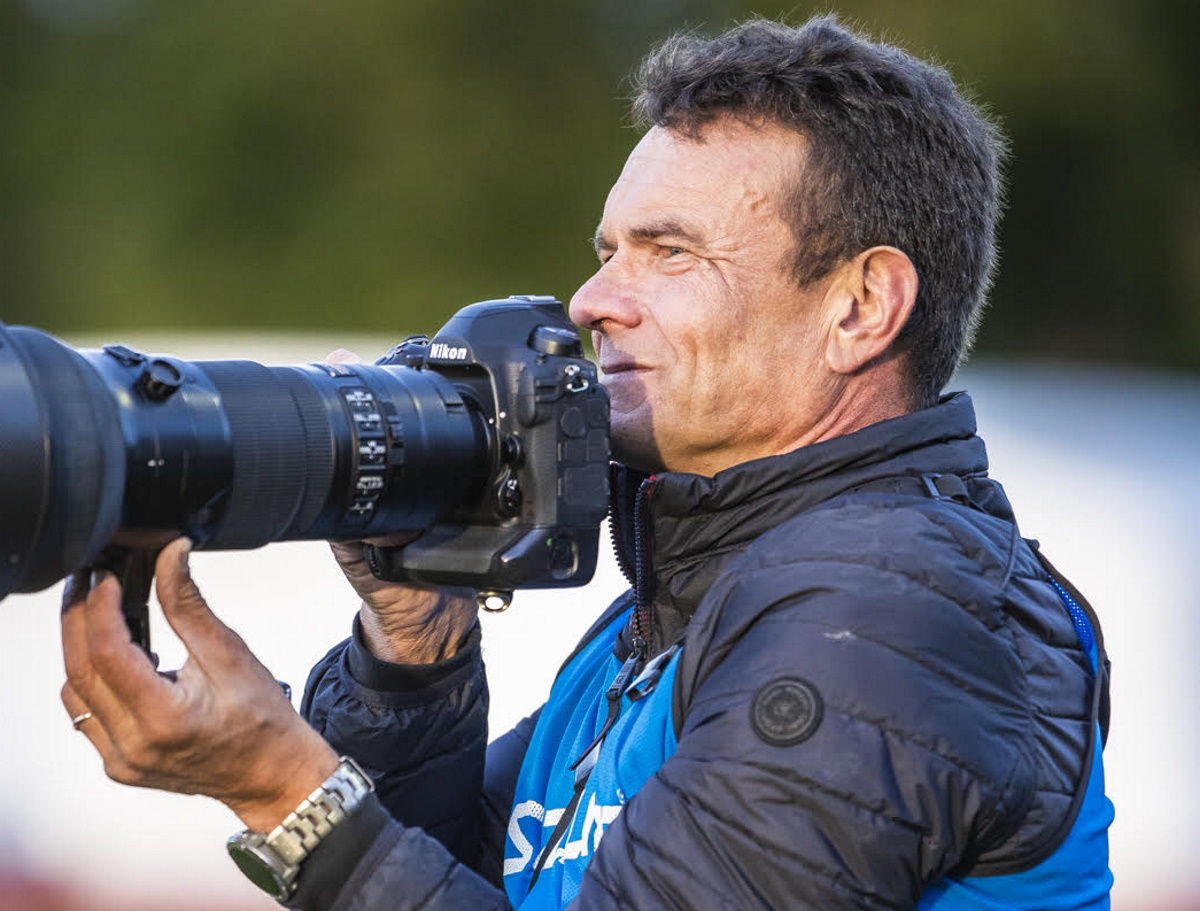
As Finland’s Maple League winds up its 2022 season with the Maple Bowl between the Kuopio Steelers and Seinäjoki Crocodiles, there is one thing for certain, regardless of the outcome of the game.
The main photographs of the action will be world class. Simply because Jari Turunen is behind the lens.
The veteran is the go-to photographer for the Finnish Federation of American Football, SAJL, and his images can be found to tell the story of almost every major game in the top league.
Janne Vainio, head of communications for SAJL:
“Jari is invaluable to put it simply. His photographs are first rate and he has them ready immediately after every game. He is world class. Without his images, the stories of our games would definitely be dull.”
In a fascinating interview, Jari relates how he started out as a player and became interested in photography as well as how he plans out every game and how luck plays a major part. He also explains the arduous task of picking the right photographs to publish.
AFI: How did you get into photography?
Turunen: I started in 1980 – many were still quite young then. I was 13 years old when I got an old system camera from my cousin. I took pictures of everything that interested me as a kid – mostly my own stuff, like dogs and scouts. Back then if I shot one roll of film per month it was 24 pictures per month and my money was just enough for that at that time.
Photography was different anyway at that time. The camera had an exposure meter but nothing else and the focusing was manual so it didn’t really work for sports photography, for example.
Canon 10 was my first digital camera which I bought in 2004. Then I started taking pictures of my children’s hobbies. At first it was motorsports, mainly karting since my son Roope competed in that. He has raced twice in the European Championships and for example among other events I was photographing him at Sarno, Italy. And when my daughter Julia (University World champion 2016 & Finnish champion 2021) started playing floorball around 15 years ago I started to take pictures also from that and I still am.
AFI: What attracted you to American football?
Turunen: I got to know American football when I went along with a friend to the practice of my hometown team Wolves, Joensuu in 1985. At the same time, some kids of my age went to play floorball in Josba, Joensuu, but we were more interested in American football. The first practice games were played in 1985 and the first real games in 1986. One winter in 1987 I trained with the Helsinki Roosters, but I never actually played there because I moved back to Joensuu before that.
In the early 1990s, I transferred to the Kuopio Bobcats and when the Varkaus Steelers were founded, I was one of the five player coaches who transferred from Kuopio. When the Steelers played in the Maple League in the early 2000s, I was still a player there.
I liked and still like the physicality of the sport – especially the tackling. Mostly I played on defense as a defensive end, but also on the offensive line.
AFI: When did you start photographing AF games?
Turunen: I started photographing American football in 2011 at Steelers games. The legendary Niko Ruotsalainen asked me to the side of the field. At the time, I had had a 10-year pause where I had nothing to do with American football, but then I went to take pictures of the Steelers II-Division games. I hadn’t photographed American football before that.
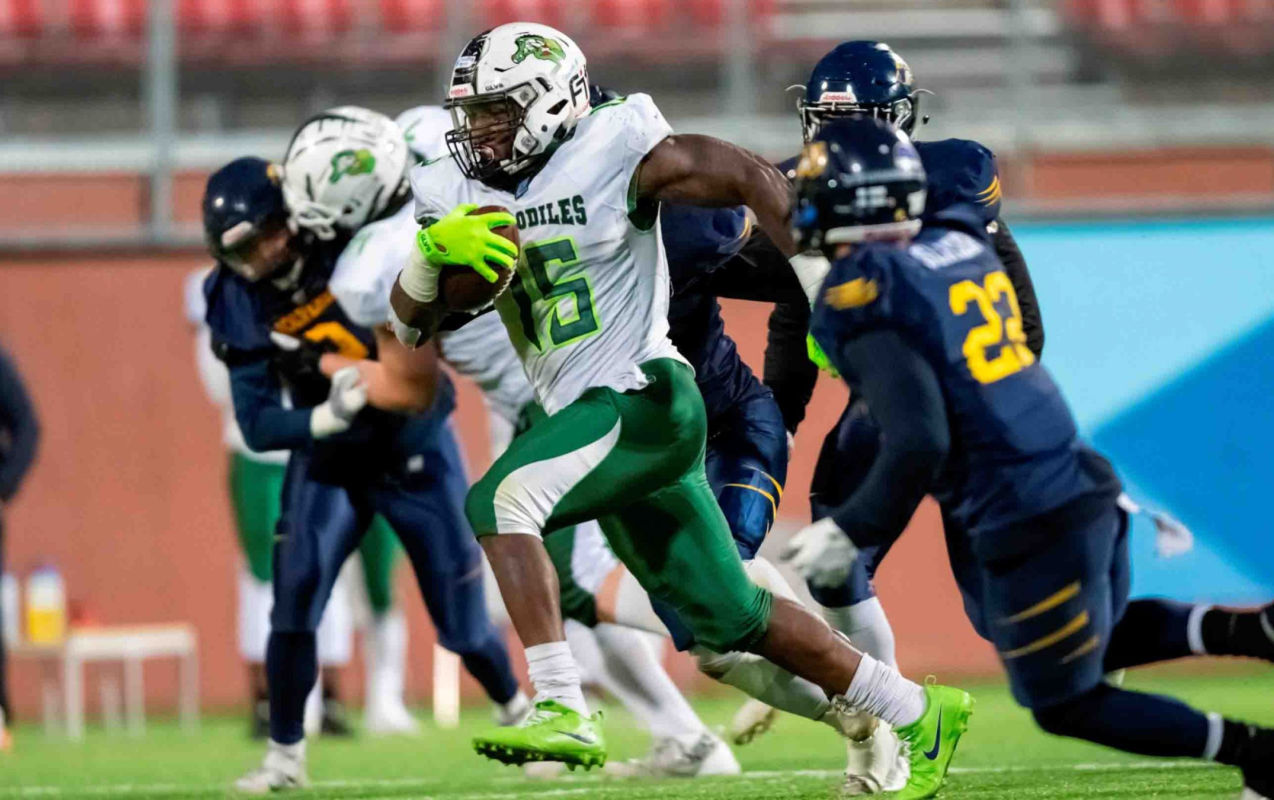
Seinäjoki Crocodiles RB Christian Powell
AFI: Is photography your full-time job?
Photography is purely a hobby for me, and I’ve made kind of an ethical choice not to compete with those who do this for a living.
AFI: Do you take a different approach when photographing AF games?
Turunen: I take pictures of American football like a defender. In principle, I always photograph attacks, but taking pictures requires anticipation and positioning yourself correctly. You can’t anticipate if you place yourself wrong. In other words, you have to be in the right place at the right time on the side of the field to be able to capture what you want.
In addition to positioning and choosing the right lens, it’s all about waiting. You can’t plan in advance what you’ll capture and you never know beforehand what you’ll get.
American football is like it’s been made for photography: the uniforms are colorful and there are new situations on the field all the time. But if someone invented invisible judges, the job would be easier. Many times, the backsides of referees have been filmed and are in the pictures.
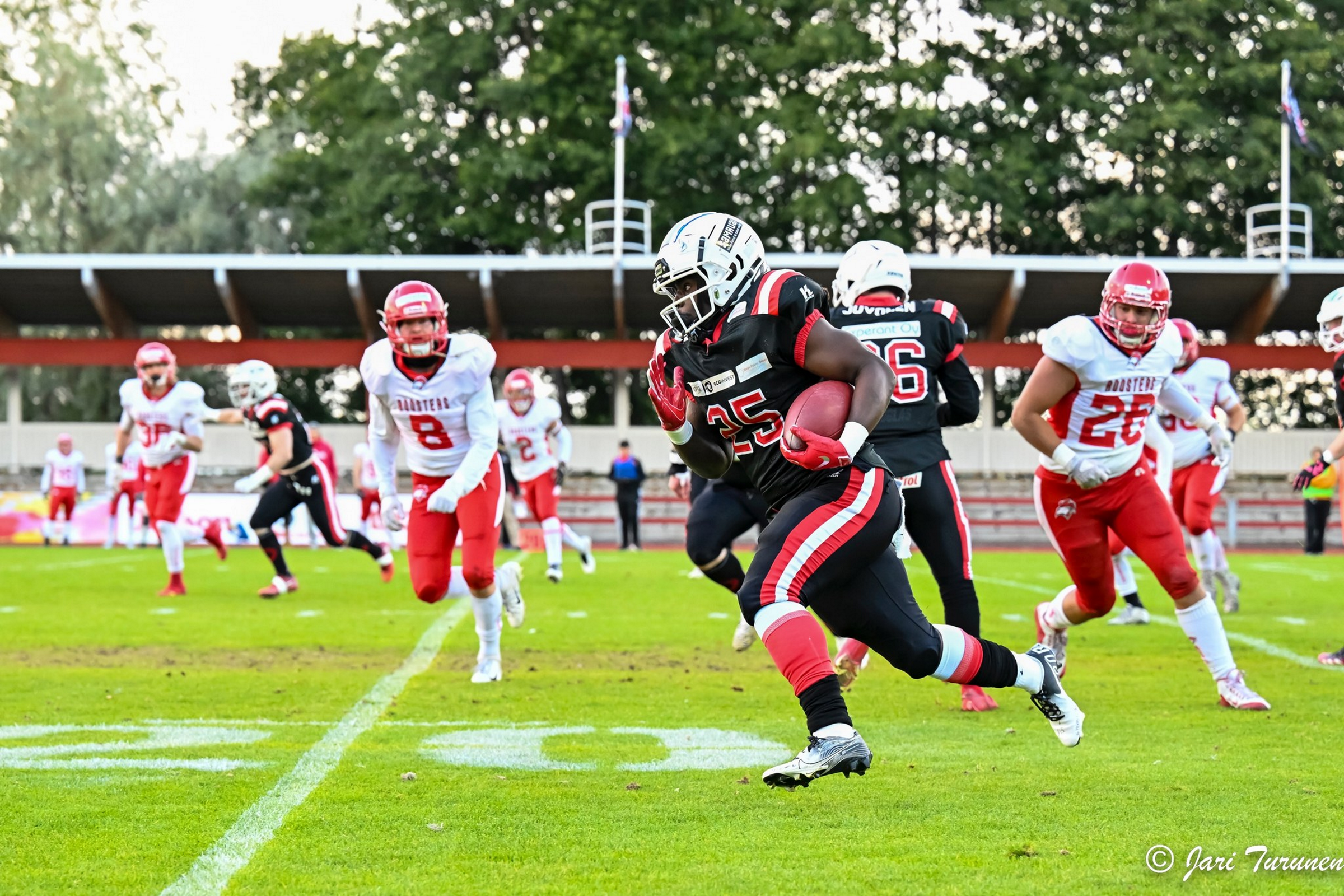
Kuopio Steelers RB Le’Anthony Reasnover
AFI: Tell us a little bit about a typical game day.
Turunen: The first thing to consider is the weather conditions. It defines what equipment I need to take with me, and which lenses I can shoot with.
I arrive at the game venue usually about an hour before the start of the game. Usually, the first hour goes on by meeting and greeting with all the familiar faces and then I start taking the pictures. I always check which team kicks and based on that I choose the side to shoot from.
After the game – for example in Helsinki – I usually sit in my car for the next few hours. I transfer the images to my computer and select the images that I save and from those the ones that I will process. I take somewhere around 2,000 to 3,000 pictures from each game and I shoot as full files meaning that they are in RAW format, which is why the files are so big, so it takes 10 minutes just to transfer them into the computer. There may be many pictures that are similar to each other and I go through them and remove the extra ones.
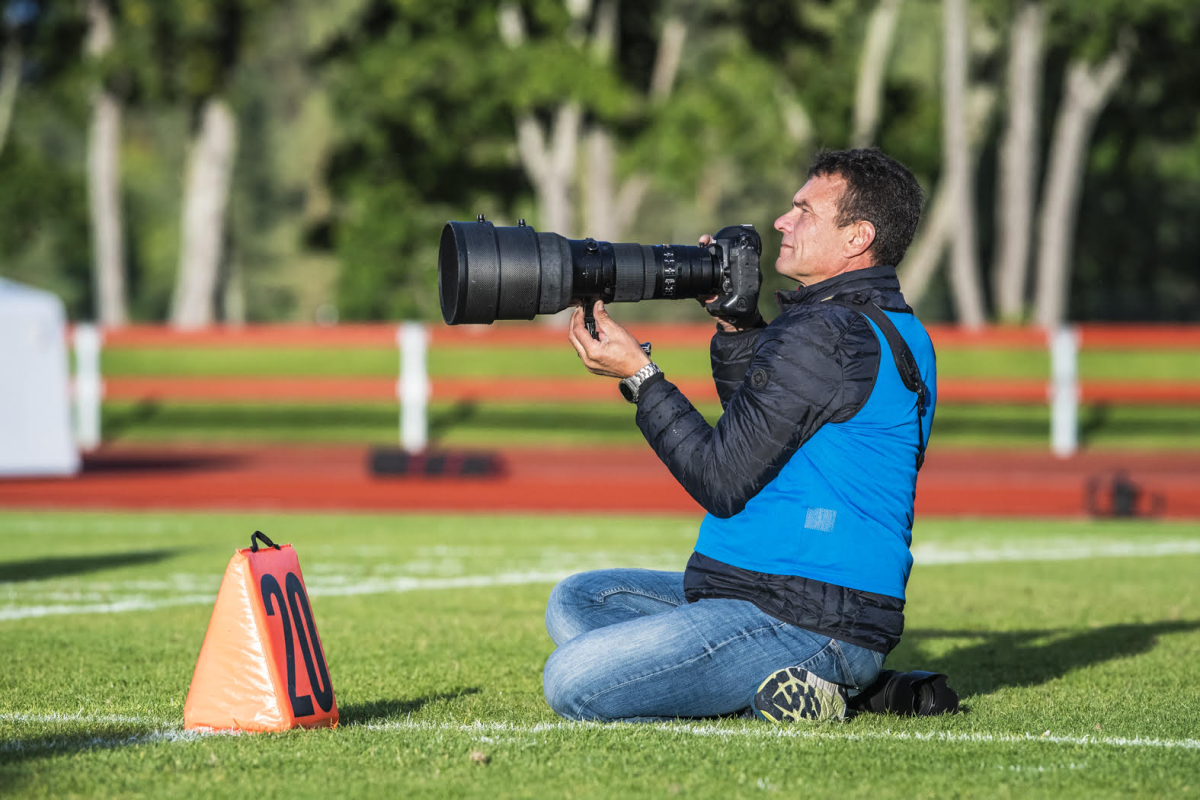
Jari Turnunen patiently waiting for the right moment.
In the processing phase, I do noise removal and a slight sharpening. I turn the horizons straight because I don’t like it if the players seem to be running uphill or downhill. Then I also adjust the lights and shadows. It’s important to me that I do not change the reality. I don’t add anything, and I don’t take anything away – only adjust.
I think there are still too many published pictures – optimally there could be about 20 quality photos. In my opinion, not all of them are that good as pictures, but I think that the players like to see them. The pictures containing a lot of subjects are usually the most viewed ones – in other words, people want to find themselves in the pictures.
It usually takes about 2-3 hours after the game for me to publish the photos, and the length of the entire shooting day is around six to seven hours. That’s why I prefer to choose the games where the teams also post pictures – that’s when I know the time hasn’t been wasted. It’s the reward for me.
Next time you are reading about a game or just checking out the photographs of the action, make sure to take note of the name of the photographer. If it’s a game from Finland, more often than not, you’ll find Jari Turunen’s name.
